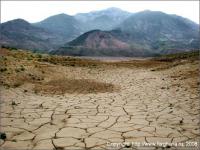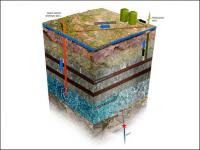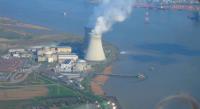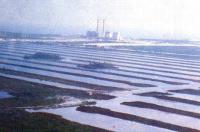-
Is Belgium’s nuclear security up to scratch?
Belgium’s counter-terrorism efforts are once again being called into question following the recent tragedies in Brussels. The attacks were carried out against soft targets – the public check-in area of Brussels Airport and Maelbeek metro station – but a series of unusual and suspicious occurrences were also reported at nuclear facilities in the country. These events highlight the very real threat to nuclear facilities. For Belgium, this recent episode is one item on a long list of security concerns. Based on this history, the Belgian authorities should be primed to take nuclear security especially seriously. But there are serious questions about whether they are.
-
-
Rapid Antarctica ice melt: Sea-level rise nearly double over earlier estimates
A new study suggests that the most recent estimates by the Intergovernmental Panel on Climate Change for future sea-level rise over the next 100 years could be too low by almost a factor of two. The researchers incorporated into their models mechanisms that were previously known but never incorporated in a model like this before, and added them to their ice-sheet model, so they could consider the effects of surface melt water on the break-up of Antarctica’s ice shelves and the collapse of vertical ice cliffs.
-
-
Laser cloaking device to help us hide Earth from aliens
Several prominent scientists, including Stephen Hawking, have cautioned against humanity broadcasting our presence to intelligent life on other planets. Two astronomers suggest humanity could use lasers to conceal the Earth from searches by advanced extraterrestrial civilizations.
-
-
U.K. to ship highly enriched uranium for disposal in U.S.

The United Kingdom will ship large quantities of enriched uranium for disposal in the United States, and in return will receive nuclear material from the United States for use in the treatment of cancer patients in Europe. About 700kg of radioactive waste, most of which is held at Dounreay in northern Scotland, will be shipped to the United States to be treated in American nuclear disposal plants, which have a greater capacity than British plants to dispose of radioactive materials.
-
-
Water problems in Asia’s future?

Economic and population growth on top of climate change could lead to serious water shortages across a broad swath of Asia by the year 2050. Having run a large number of simulations of future scenarios, the researchers find that the median amounts of projected growth and climate change in the next thirty-five years in Asia would lead to about one billion more people becoming “water-stressed” compared to today.
-
-
Fracking linked to most induced earthquakes in western Canada

A survey of a major oil and natural gas-producing region in Western Canada suggests a link between hydraulic fracturing or “fracking” and induced earthquakes in the region. The study’s findings differ from those reported from oil and gas fields in the central United States, where fracking is not considered to be the main cause of a sharp rise in induced seismicity in the region. Instead, the proliferation of hundreds of small earthquakes in that part of the United States is thought to be caused primarily by massive amounts of wastewater injected back into the ground after oil and gas recovery.
-
-
Fracking-related quakes make central U.S. as vulnerable as California to tremor damage

For the first time, new USGS maps identify potential ground-shaking hazards from both human-induced and natural earthquakes. The new report shows that approximately seven million people live and work in areas of the central and eastern United States (CEUS) with potential for damaging shaking from induced seismicity. Within a few portions of the CEUS, the chance of damage from all types of earthquakes is similar to that of natural earthquakes in high-hazard areas of California.
-
-
Clearer view of risky leaks from gas mains in Boston
Natural gas is considered a relatively clean fossil fuel, but a substantial amount of the gas is lost in production and distribution. In addition to the safety risks, methane (the main component of natural gas) is a major contributor to atmospheric warming. Precise measurements of leaks from natural gas pipelines across metropolitan Boston have demonstrated that almost a sixth of the leaks qualified as potentially explosive, and that a handful of leaks emitted half of the total gas lost.
-
-
Brussels attackers originally planned to attack a nuclear facility: Belgian authorities

The terrorists who attacked the airport and a metro station on Tuesday had originally considered targeting a Belgian nuclear site, but that such an attack would have required more time and planning. The terrorists abandoned the nuclear facility attack plan after Belgian security services arrested a number of Islamist militants, forcing the terrorists to act more quickly and focus on soft targets instead of a hardened nuclear facility. EU counterterrorism coordinator said that Belgium’s network of nuclear power stations could become the targets of cyberattacks by terrorists in the near future. “And if [ISIS] ever did turn to nuclear weapons,” one experts says, “they have more people, more money and more territory under their control and more ability to recruit experts globally than Al Qaeda at its best ever had.”
-
-
Sandia Lab helps China launch nuclear security center

U.S. national labs and their Chinese counterparts have launched the Chinese Center of Excellence (COE) for nuclear security. The center will provide training for security personnel in China’s expanding nuclear power sector. Sandia notes that its experience in physical security grew out of decades of work securing high-consequence facilities against theft and sabotage.
-
-
Sniffing out a dangerous vapor for detecting fuel leaks, fuel-based explosives
Alkane fuel is a key ingredient in combustible material such as gasoline, airplane fuel, oil — even a homemade bomb. Yet it is difficult to detect and there are no portable scanners available that can sniff out the odorless and colorless vapor. Engineers have developed a new type of fiber material for a handheld scanner that can detect small traces of alkane fuel vapor, a valuable advancement that could be an early-warning signal for leaks in an oil pipeline, an airliner, or for locating a terrorist’s explosive.
-
-
Quantifying climate-driven impacts on the Colorado Basin, developing response strategies
The Colorado basin — roughly 11 percent of the United States — directly supports water supply for more than thirty million people, accounts for approximately 15 percent of U.S. crops and livestock, and provides 53 gigawatts of power generation capacity. Climate-driven heat-stress and forest mortality on the Colorado River watershed are expected to reduce river flows basin-wide out to the year 2100.
-
-
Benchmark data set validates global nuclear reactor codes
Nearly 100 commercial nuclear reactors supply one-fifth of America’s energy. For each fuel rod in a reactor assembly, only 5 percent of its energy is consumed before fission can no longer be sustained efficiently for power production and the fuel assembly must be replaced. Power plants currently store the used fuel on-site. Information on the composition of the used fuel is essential for the design of safe storage, transportation, and final repository facilities and for inspection and verification to safeguard nuclear materials. Improved accuracy in prediction of the spent fuel isotopic composition leads to increased efficiency in the facility designs and higher confidence in the safeguard protocols.
-
-
Florida’s Turkey Point nuke pollutes Biscayne Aquifer, Biscayne National Park

Contaminated water originating from the cooling canal system at Florida Power & Light’s (FPL) Turkey Point facility is reaching Biscayne Bay, threatening South Florida’s drinking water supply and Biscayne National Park. The facility is one of Florida’s biggest daily water users and discharges at least 600,000 pounds of salt and other contaminants directly into the Biscayne Aquifer on a daily basis. The Biscayne Aquifer is a “sole source,” federally designated aquifer that serves more than three million people.
-
-
Hezbollah threatens it will attack Israel’s nuclear facilities in future war
Hassan Nasrallah, Hezbollah leader, on Monday threatened that in the event of another war between Hezbollah and Israel, his Iran-supported Shi’ia Lebanese militia will strike all targets in the Jewish state “without any limits.” He added: “If the Israeli army escalates its aggression against Lebanon, Hezbollah will strike all the strategic targets in the occupied Palestinian territories, including the nuclear facilities.”
-
- All
- Regional
- Water
- Biometrics
- Borders/Immig
- Business
- Cybersecurity
- Detection
- Disasters
- Government
- Infrastructure
- International
- Public health
- Public Safety
- Communication interoperabillity
- Emergency services
- Emergency medical services
- Fire
- First response
- IEDs
- Law Enforcement
- Law Enforcement Technology
- Military technology
- Nonlethal weapons
- Nuclear weapons
- Personal protection equipment
- Police
- Notification /alert systems
- Situational awareness
- Weapons systems
- Sci-Tech
- Sector Reports
- Surveillance
- Transportation
Advertising & Marketing: advertise@newswirepubs.com
Editorial: editor@newswirepubs.com
General: info@newswirepubs.com
2010-2011 © News Wire Publications, LLC News Wire Publications, LLC
220 Old Country Road | Suite 200 | Mineola | New York | 11501
Permissions and Policies
Editorial: editor@newswirepubs.com
General: info@newswirepubs.com
2010-2011 © News Wire Publications, LLC News Wire Publications, LLC
220 Old Country Road | Suite 200 | Mineola | New York | 11501
Permissions and Policies
